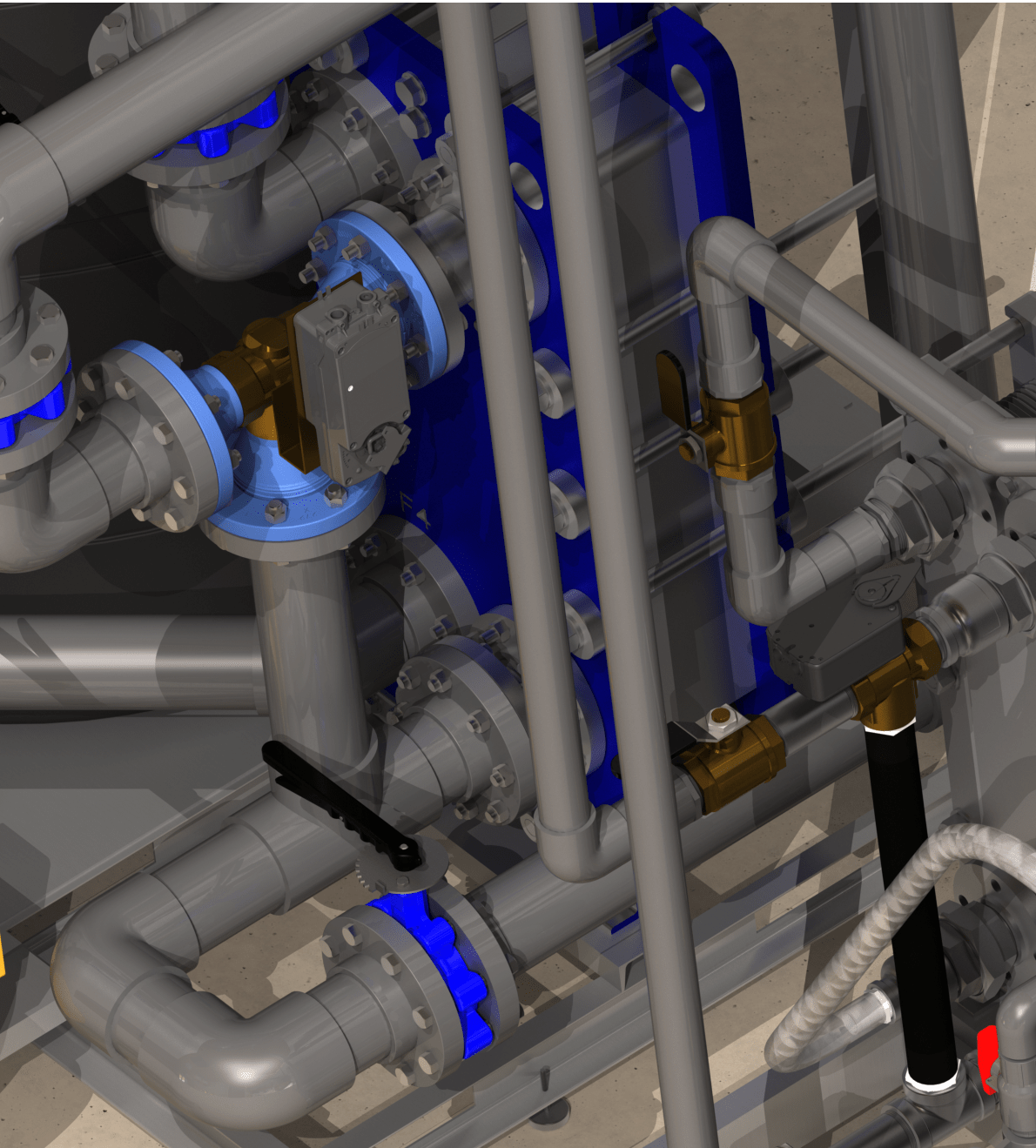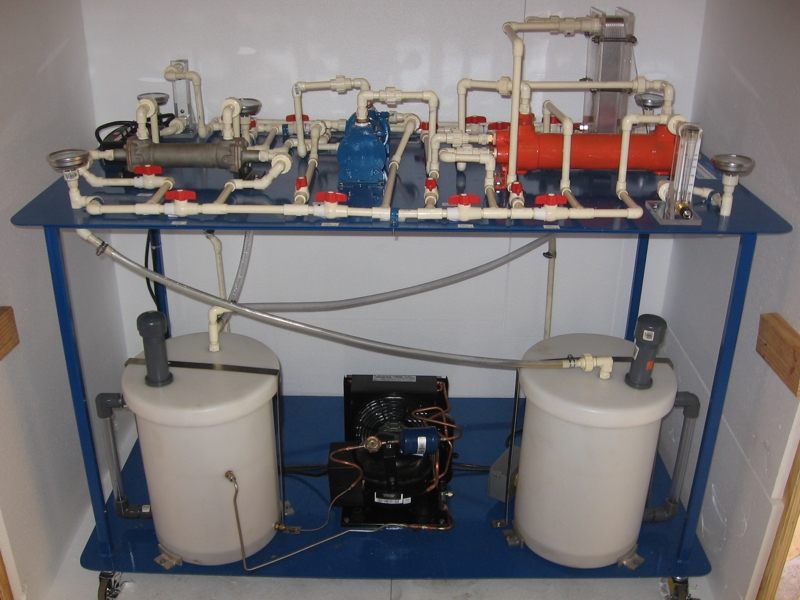What’s Next for DVS Heat Transfer Systems in the Era of Smart Thermal Infrastructure
A Comprehensive Guide to Choosing the Right Heat Transfer Systems for Your Needs
Picking the appropriate Heat transfer system is essential for functional effectiveness. Numerous systems deal with various requirements, affected by aspects such as temperature array and liquid kind. Understanding the principles behind Heat transfer, such as radiation, conduction, and convection, is crucial. Additionally, evaluating power resources and upkeep practices can affect long-lasting efficiency. A closer assessment of these factors to consider exposes how to customize a system to certain demands. What should one prioritize in this facility decision-making procedure?
Recognizing Heat Transfer: Key Ideas and Principles
Heat transfer may seem like a straightforward principle, it incorporates a variety of concepts that are essential for effective system layout - DVS Heat Transfer Systems. Recognizing these principles is vital for developers and engineers who intend to maximize thermal efficiency in various applications. Transmission, for circumstances, involves the transfer of Heat through strong products, while convection describes the activity of Heat within liquids. Radiation, one more crucial principle, defines exactly how Heat can be moved via electromagnetic waves. Each of these devices plays an important role in determining just how energy moves within a system. By completely realizing these ideas, specialists can make informed choices, guaranteeing that Heat transfer systems operate efficiently and meet the certain demands of their applications
Kinds Of Heat Transfer Equipments: An Introduction
Comprehending the concepts of Heat transfer prepares for checking out the numerous sorts of Heat transfer systems available. Heat transfer systems can be classified mostly into three types: conduction, radiation, and convection. Transmission includes Heat transfer via strong materials, depending on straight get in touch with in between particles. Convection, on the other hand, happens in fluids (gases and fluids) where the activity of the liquid itself promotes Heat transfer. Radiation involves the transfer of Heat via electromagnetic waves and does not call for a medium, permitting it to happen in a vacuum cleaner. Each type of system has unique attributes and applications, making it necessary for individuals and companies to very carefully assess their certain needs when selecting one of the most appropriate Heat transfer service.
Applications of Heat Transfer Systems in Numerous Industries
Heat transfer systems play a vital role throughout numerous markets, affecting performance and item high quality. In commercial production processes, they assist in accurate temperature control, while in food and drink processing, they guarantee safety and conservation. Furthermore, cooling and heating and climate control systems depend greatly on effective Heat transfer to keep comfy settings.
Industrial Manufacturing Processes

Many commercial production procedures count heavily on effective Heat transfer systems to make the most of efficiency and boost item quality. In markets such as metalworking, Heat exchangers play a vital duty in keeping optimal temperature levels throughout welding, spreading, and creating. These systems guarantee uniform Heat distribution, which is vital for achieving preferred product properties. Likewise, in the chemical production market, Heat transfer systems facilitate specific temperature level control throughout responses, influencing return and security. Additionally, in textile production, effective Heat monitoring is crucial for dyeing and ending up procedures, affecting shade consistency and textile top quality. By selecting appropriate Heat transfer modern technologies, manufacturers can boost energy effectiveness and lower functional costs, eventually bring about an extra sustainable and competitive manufacturing atmosphere.
Food and Drink Processing
Reliable Heat transfer systems are similarly important in the food and drink processing sector, where maintaining suitable temperature levels is vital for food safety and security and high quality. These systems play an important function in processes such as food preparation, pasteurization, and sanitation, ensuring that products are safe for consumption and maintain their nutritional worth. Heat exchangers, for instance, efficiently move Heat in between fluids, maximizing power usage while minimizing temperature variations. Additionally, refrigeration systems are essential for prolonging and preserving disposable products service life. The choice of Heat transfer innovation directly affects functional performance and product integrity, making it important for food and beverage makers to choose the appropriate systems tailored to their certain handling demands. This careful choice inevitably adds to consumer contentment and food security.

Heating And Cooling and Climate Control
While lots of markets count on Heat transfer systems for efficiency, HEATING AND COOLING (Home Heating, Air Flow, and Air Conditioning) plays a vital role in preserving indoor environment control across various settings. These systems make use of Heat transfer principles to manage humidity, air, and temperature quality, ensuring convenience and safety in property, commercial, and commercial environments. Appropriately designed a/c systems improve power performance, minimize functional prices, and lessen ecological impact. In commercial buildings, as an example, reliable climate control adds to employee efficiency and client complete satisfaction. In commercial applications, cooling and heating systems help keep perfect conditions for equipment operation and product conservation. Choosing the right Heat transfer system is crucial for meeting specific climate control demands and attaining general system efficiency.
Evaluating Energy Resources for Heat Transfer Solutions
In assessing energy resources for Heat transfer systems, a contrast of sustainable energy choices and fossil fuel factors to consider is crucial. Sustainable resources, such as solar and wind, offer sustainable options that can decrease environmental effect. Alternatively, fossil gas continue to be widespread as a result of their established facilities and power thickness, prompting a careful analysis of both choices.
Renewable Energy Options

Fossil Gas Factors To Consider
Examining nonrenewable fuel source factors to consider is vital for the efficiency and sustainability of Heat transfer systems. Fossil fuels, such as gas, oil, and coal, are typical energy sources that offer substantial Heat result, making Discover More Here them preferred choices for commercial and property applications. Nevertheless, their ecological effect, consisting of greenhouse gas exhausts and source exhaustion, elevates issues. When choosing a heat transfer system, it is crucial to assess the accessibility, price, and governing elements associated with these gas. Furthermore, the effectiveness of nonrenewable fuel source systems need to be considered, as greater performance can reduce some ecological drawbacks. Eventually, a balanced approach weighing efficiency and sustainability can guide decision-makers towards one of the most suitable Heat transfer remedy for their particular demands.
Aspects to Take Into Consideration When Picking a Heat Transfer System
Selecting a proper Heat transfer system calls for careful consideration of different aspects that can substantially impact effectiveness and efficiency. One crucial factor is the operating temperature array, which determines the materials and design ideal for the application. Furthermore, the sort of fluid made use of in the system-- whether gas or fluid-- impacts Heat transfer performance and compatibility. The system's size and capability need to straighten with the specific requirements of the operation to prevent inadequacies. Power source accessibility is also important, affecting operating costs and sustainability. The installment atmosphere, including space restrictions and ease of access for maintenance, plays a considerable role in system selection. Lastly, governing compliance and security criteria must be taken into consideration to ensure the system satisfies all lawful needs.
Upkeep and Performance Optimization for Heat Transfer Equipments
Preserving Heat transfer systems is crucial for guaranteeing optimal efficiency and durability. Regular upkeep activities, such as cleaning Heat exchangers and checking insulation, aid protect against efficiency losses due to fouling and thermal linking. Additionally, monitoring system Visit This Link parameters, including pressure and temperature, permits very early discovery of anomalies, reducing downtime and costly repair services. Carrying out a preventative maintenance routine can maximize performance and prolong the life expectancy of parts. In addition, updating to sophisticated control systems can enhance functional efficiency by getting used to varying lots and conditions. By prioritizing upkeep and efficiency optimization, operators can attain minimized energy consumption, lower functional prices, and enhanced total system integrity, inevitably causing better resource use and a more lasting operation.
Future Fads in Heat Transfer Technologies
As markets significantly focus on sustainability and power efficiency, future fads in Heat transfer technologies are established to undertake substantial changes. Advancements such as advanced materials, consisting of carbon nanotubes and nanofluids, assure enhanced thermal conductivity and performance. Additionally, the integration of renewable resource sources into Heat transfer systems is gaining momentum, advertising environmentally friendly solutions. Smart innovations, consisting of IoT sensors, are expected to revolutionize monitoring and control, making it possible for real-time data evaluation for maximized efficiency. In addition, the advancement of small and modular systems will help with less complicated setup and upkeep, accommodating varied applications. These improvements show a shift towards even more lasting, effective, and versatile Heat transfer options, aligning have a peek at this website with worldwide power goals and ecological standards.
Often Asked Inquiries
What Are the Ecological Effects of Heat Transfer Equipments?
The ecological influences of Heat transfer systems can consist of greenhouse gas exhausts, energy intake, and potential thermal air pollution. In addition, incorrect disposal of products and inadequacies can contribute to source exhaustion and community disruption.
Exactly how Do I Calculate the Cost-Effectiveness of a Warm Transfer System?
To compute the cost-effectiveness of a warmth transfer system, one must assess first prices, functional costs, maintenance requirements, and energy efficiency, comparing these factors versus the anticipated life expectancy and performance of the system.
Can Heat Transfer Solution Be Used in Residential Settings?
Heat transfer systems can without a doubt be used in residential settings. They offer reliable heating and cooling options, making homes much more comfy while potentially decreasing power expenses. Their flexibility enables various applications in property settings.
What Safety Regulations Relate To Heat Transfer Solutions?
Safety and security regulations for Heat transfer systems normally consist of guidelines on operation, installation, and upkeep. Compliance with neighborhood building ordinance, supplier specs, and sector requirements is vital to ensure secure and effective system efficiency in various applications.
Just How Do Various Products Affect Heat Transfer Effectiveness?

Transmission, for circumstances, involves the transfer of Heat via solid products, while convection refers to the activity of Heat within fluids. Comprehending the principles of Heat transfer lays the foundation for checking out the various types of Heat transfer systems offered. Heat exchangers, for circumstances, successfully transfer Heat between liquids, enhancing energy usage while decreasing temperature fluctuations. In reviewing power resources for Heat transfer systems, a contrast of sustainable energy choices and fossil fuel factors to consider is necessary. Steels, such as copper and light weight aluminum, conduct Heat effectively, whereas insulators like rubber and glass reduce down Heat circulation.